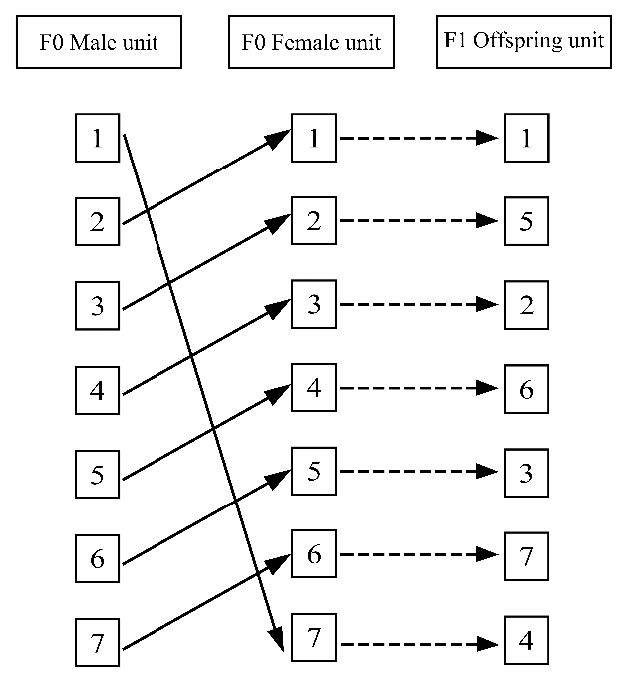Selecting and Establishment of a Low-Incidence Hydronephrosis Wistar Rat (Mlac:WR) Colony at the National Laboratory Animal Center, Mahidol University, Thailand
Keywords:
Wistar rat, Mlac:WR , Hydronephrosis, Selection, National Laboratory Animal CenterAbstract
This study established a low incidence hydronephrosis Wistar rat (Mlac:WR) colony at the National Laboratory Animal Center, Mahidol University, Thailand. Twenty Mlac:WR breeding pairs were randomized to determine the percentage of hydronephrosis in the original National Laboratory Animal Center colony. Hydronephrosis was discovered in 9.66% of the population. Breeder selection for breeding was carried out by using the progeny selection method, which selects offspring based on their characteristics, in combination with the breeding principle of maximum avoidance of inbreeding and the rotational mating system. Breeding pairs that produced hydronephrosis offspring were removed from the colony and replaced with offspring from other healthy breeding pairs within the same group in the next generation. The results from selection and breeding revealed that the incidence of hydronephrosis was 7.5% in the F0, decreasing to 1.07%-1.72% in the F2-F4, and 0.00% in the F5. However, the incidence of hydronephrosis was found at 0.49% in the F6-F7, decreasing to 0.00% in the F8, and was found again at 0.42%-1.02% in the F9-F10. This is because hydronephrosis traits are genetically linked and controlled by several genes. Therefore, it cannot be completely eliminated from the population.
References
Anderson JC. Hydronephrosis. 1st ed. London, UK: Butterworth-Heinemann; 1963.
Niesterok C, Köhler C, Alef M, Kiefer I. Causes of hydronephrosis in dogs and cats. Ultraschall in der Medizin-European Journal of Ultrasound 2016;37:PS1_02.
Karlson AG, Kernkamp HCH. Hydronephrosis in swine. Iowa State University Veterinarain 1941;4:18-20.
Harrison GD, Biller D, Wilson DG, Castleman WL. Ultrasonographic diagnosis of hydro-nephrosis in a cow. Veterinary Radiology and Ultrasound 2005;33:49-51.
Sellers AL, Rosenfeld S, Friedman NB. Spontaneous hydronephrosis in the rat. Proceedings of the Society for Experimental Biology and Medicine 1960;104:512-5.
Anver MR, Cohen BJ, Lattuada CP, Foster SJ. Age-associated lesions in barrier-reared male Sprague-Dawley rats: A comparison between Hap: (SD) and Crl:COBS[R]CD[R] (SD) stocks. Experimental Aging Research 1982;8:3-24.
Burton DS, Maronpot RR, Howard FL3rd. Frequency of hydronephrosis in Wistar rats. Laboratory Animal Science 1979;29(5): 642-4.
Friedman J, Hoyer JR, Mccormick B, Lewy JE. Congenital unilateral hydronephrosis in the rat. Kidney International 1979;15(5):567-71
National Research Council. Guide for the care and use of laboratory animals. 8th ed. Washington DC, USA: The National Academic Press; 2011.
Poiley SM. A systematic method of breeder rotation for non-inbred laboratory animal colonies. Proceedings of the Animal Care Panel 1960;10:156-66.
King WW, Russell SP. Metabolic, traumatic, and miscellaneous diseases. In: Suckow MA, Weisbroth SH, Franklin CL, editors. The Laboratory Rats. 2nd ed. Amsterdam: Elsevier Academic Press; 2006. p. 531-2.
Lozzio BB, Chernoff AI, Machado ER, Lozzio CB. Hereditary renal disease in a mutant strain of rats. Science 1967;156(3783):1742-44.
Kota L, Schulz H, Falak S, Hübner N, Osborne-pellegrin M. Localization of genetic loci controlling hydronephrosis in the Brown Norway rat and its association with hematuria. Physiological Genomics 2008;34(6):215-24.

Downloads
Published
Issue
Section
License
บทความทุกบทความที่ตีพิมพ์ในวารสารการพัฒนางานประจำสู่งานวิจัย (JPR2R) ถือว่าเป็นลิขสิทธิ์ของวารสารการพัฒนางานประจำสู่งานวิจัย คณะสิ่งแวดล้อมและทรัพยากรศาสตร์ มหาวิทยาลัยมหิดล





